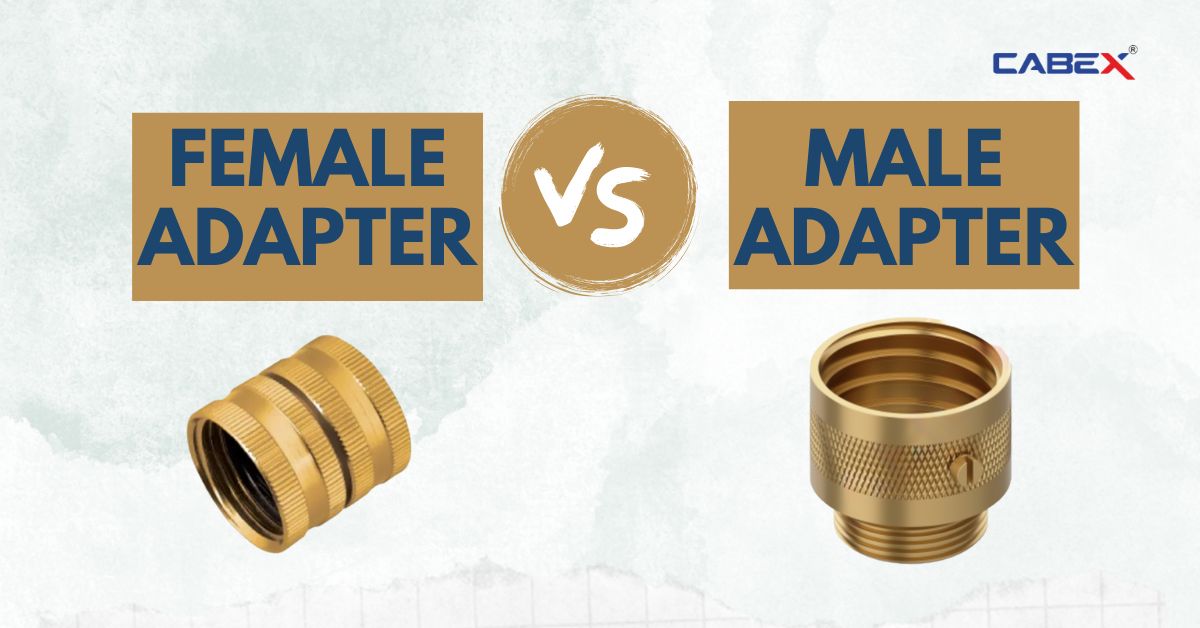Introduction:
Difference Between Female and Male Adapters: In the world of technology and electronics, adapters play a crucial role in connecting various devices and ensuring seamless compatibility. Adapters come in different types, and among them, the female and male adapter are commonly encountered. While they may appear similar at first glance, there are significant differences between the two. In this blog post, we will delve into the dissimilarities and shed light on the specific characteristics of female and male adapters.
Understanding Adapters and Their Role
Adapters are essential components used to connect devices or cables with different connectors, ensuring compatibility and enabling seamless communication between them. They serve as intermediaries, bridging the gap between two different interfaces. Adapters can be found in various shapes, sizes, and types to accommodate different connection requirements.
Female Adapters Explained
Female adapters, also known as sockets or jacks, are designed to accept male connectors. They typically feature a hollow recess that allows male connectors to be inserted securely. Female adapters are widely used in electronic devices, such as computers, smartphones, audio equipment, and more. They serve as connection points where cables or other devices with male connectors can be plugged in.
Male Adapters Unveiled
Male adapters, also referred to as plugs or connectors, are designed to be inserted into female adapters. They feature protruding pins or prongs that establish electrical or data connections when inserted into the corresponding female adapter. Male adapters are found in various configurations to match the specific requirements of different devices and connectors.
Physical Difference Between Female and Male Adapters
The physical difference between female and male adapters lie in their structure and design. Female adapters have an opening or recess where male connectors can be inserted, while male adapters have pins or prongs that fit into the female adapter. The gender of an adapter is determined by its design and functionality, as opposed to any inherent characteristics.
Functional Difference Between Female and Male Adapters
Apart from their physical dissimilarities, female and male adapters also exhibit functional differences. Female adapters provide the means to accept male connectors and establish connections. They typically offer a secure and stable connection, ensuring uninterrupted transmission of power, data, or signals. On the other hand, male adapters are designed to fit into female adapters, allowing devices or cables to be connected with ease.
Common Applications of Female and Male Adapters
Female and male adapters find widespread use in numerous applications across various industries. Some common applications of female adapters include audio and video equipment, computer peripherals, power connectors, and network devices. Male adapters, on the other hand, are commonly utilized in cables, chargers, computer interfaces, and audio/video connectors.
Key Differences Between Female and Male Adapters
This table provides a concise overview of the key differences between female adapters and male adapters, focusing on their design, functionality, usage, and applications.
| Aspect | Female Adapter | Male Adapter |
|---|---|---|
| Design | Has a recess or opening to accept male connectors | Features pins or prongs to fit into female adapters |
| Functionality | Accepts male connectors and establishes connections | Fits into female adapters, allowing devices or cables to connect |
| Usage | Found in electronic devices like computers, smartphones, etc. | Used in cables, chargers, computer interfaces, audio/video |
| Connection Type | Provides connection points for male connectors | Inserts into female adapters to establish connections |
| Applications | Audio/video equipment, computer peripherals, power connectors | Cables, chargers, computer interfaces, audio/video connectors |
Conclusion:
In conclusion, understanding the difference between female and male adapters is crucial when it comes to connecting devices and ensuring compatibility. While female adapters accept male connectors and provide connection points, male adapters fit into female adapters to establish the necessary connections. By identifying the specific requirements of your devices and connectors, you can choose the right adapter that suits your needs and enables seamless communication. Remember, whether you are dealing with audio equipment, computer peripherals, or any other electronic devices, selecting the appropriate adapter is essential to ensure a reliable and efficient connection.



